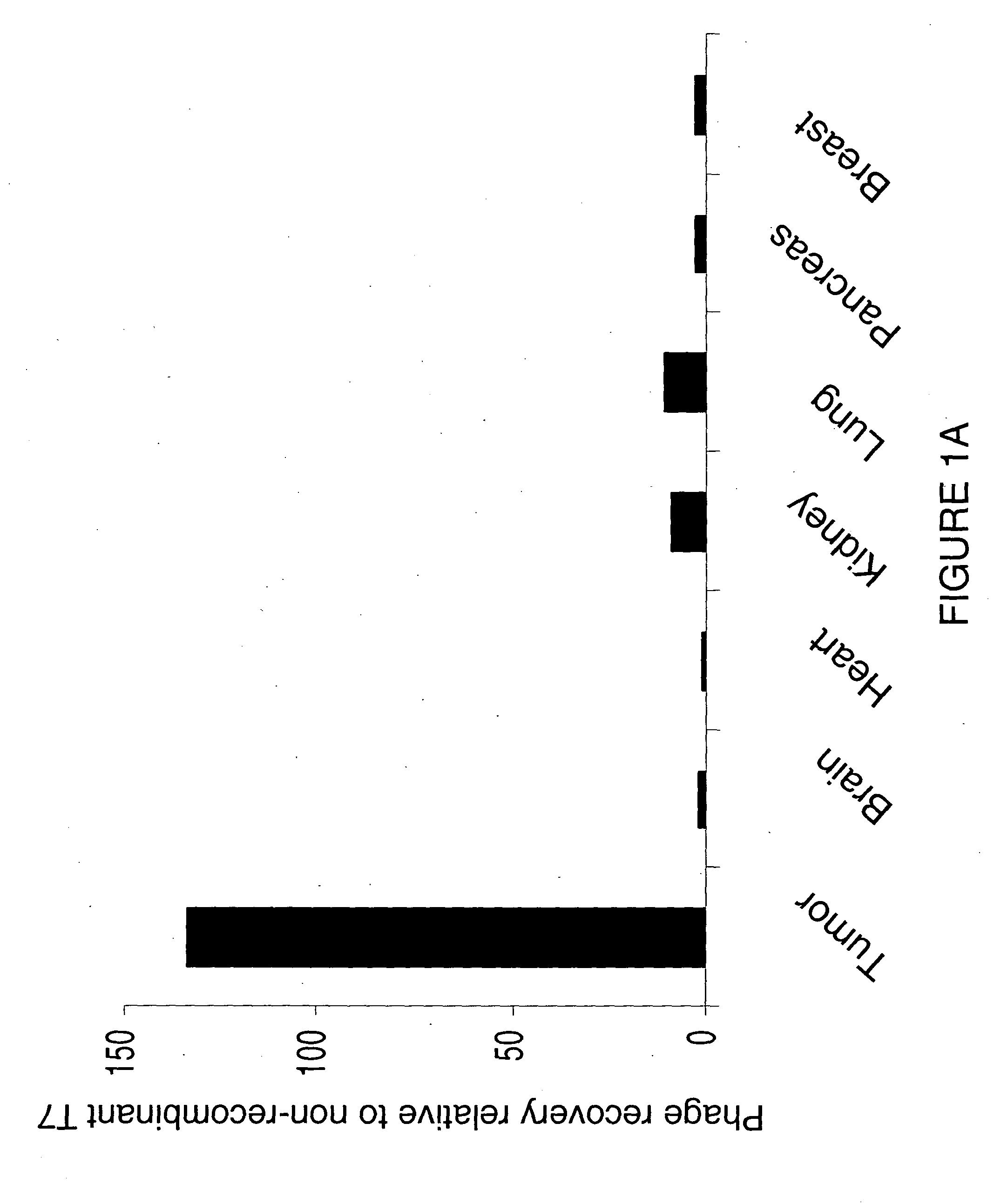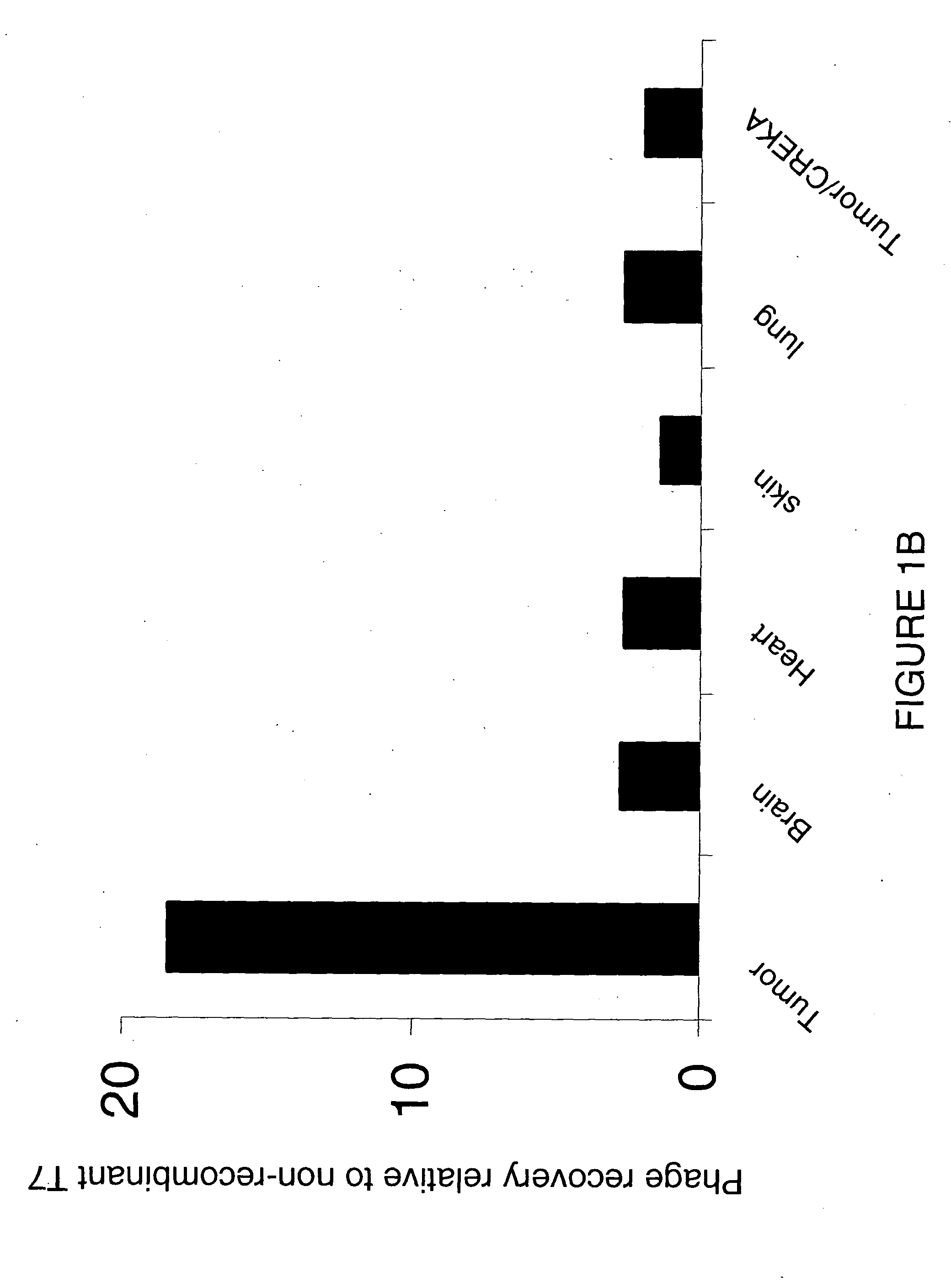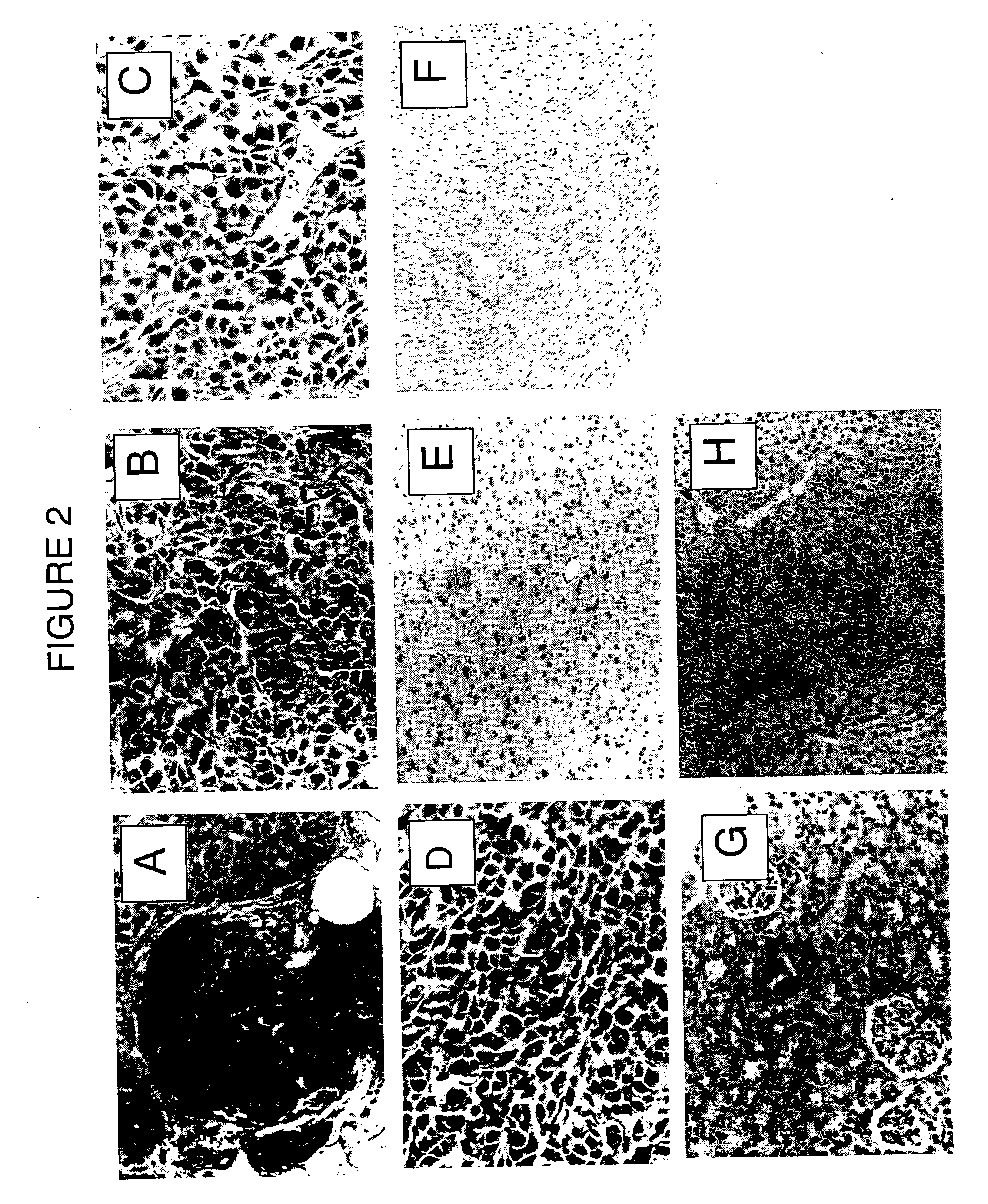Collagen-binding molecules that selectively home to tumor vasculature and methods of using same
a technology of collagen-binding molecules and tumor vasculature, which is applied in the field of molecular medicine and cancer biology, can solve the problems of reducing the number of tumor vessels, scarring and loss of normal tissue, and substantial damage to organs such as bone marrow, mucosae, skin and small intestine, which undergo rapid cell turnover and continuous cell division, and achieves the reduction of tumor vessels, tumor vessels, and tumors.
- Summary
- Abstract
- Description
- Claims
- Application Information
AI Technical Summary
Benefits of technology
Problems solved by technology
Method used
Image
Examples
example 1
Phage Expressing the Pentapeptide CREKA (SEQ ID NO: 1) Home to Breast Cancer Tissue
[0115] This example describes identification of the CREKA (SEQ ID NO: 1) tumor homing peptide.
[0116] To identify phage that selectively home to tumor vasculature, a phage-displayed peptide library was injected intravenously into two month-old MMTV-PyMT mice; bound phage were subsequently recovered from breast tumor tissue. The number of phage recovered from breast tissue increased about 100-fold after three rounds of injection and recovery; additional rounds of injection and recovery did not further improve the selectivity. Sequence analysis showed that phage displaying the peptide CREKA (SEQ ID NO: 1) were significantly enriched in the phage pool recovered after three rounds of screening, representing about 20% of phage present in the pool.
[0117] Phage preparations (1×109 plaque forming units (pfu)) of CREKA (SEQ ID NO: 1)-displaying phage were injected into tumor-bearing mice and subsequently rec...
example 2
Tissue Localization of CREKA (SEQ ID NO: 1)-Displaying Phage and CREKA (SEQ ID NO: 1) Peptide
[0122] This example describes the selective homing of CREKA (SEQ ID NO: 1)-displaying phage and labeled CREKA (SEQ ID NO: 1) peptide.
[0123] Immunoperoxidase staining revealed CREKA (SEQ ID NO: 1) phage in MMTV PyMT tumors (FIG. 2A) and in MDA-MB-435 xenografts (FIG. 2B) 15 minutes after intravenous injection. In contrast, similarly injected non-recombinant T7 phage could not be detected in the tumors (FIG. 2C). Furthermore, the IgG control antibody staining was negative (FIG. 2D), and no CREKA (SEQ ID NO: 1)-displaying phage were detected in control normal organs such as the brain, kidney and heart (FIGS. 2E, 2F and 2G, respectively). The liver stained positive for the CREKA (SEQ ID NO: 1) phage as shown in panel 2H and also stained positive for control phage, indicating non-specific uptake of the phage by the reticuloendothelial system, as has been observed previously (Pasqualini et al., ...
example 3
A Collagen IV Alpha-2 Chain-Related Protein Binds to the CREKA (SEQ ID NO: 1) Peptide
[0128] This example describes identification of a receptor for the CREKA (SEQ ID NO: 1) tumor homing peptide.
[0129] A. Identification of a Receptor for the CREKA (SEQ ID NO: 1) Peptide
[0130] To identify a receptor for CREKA (SEQ ID NO: 1) in breast tumor vasculature, a mouse breast cancer cDNA library was screened for binding of expressed proteins to immobilized CREKA (SEQ ID NO: 1) peptide. Among the individual phage clones obtained, one clone avidly bound to the peptide-coated surface (FIG. 4A), but not to an uncoated surface treated with the blocking buffer only. Sequence analysis showed that this clone encodes a 138 amino acid fragment related to the collagen IV alpha-2 chain (see FIG. 4B). The presence of Gly-X-Y repeats revealed that the fragment was derived from the triple helical portion of collagen IV.
[0131] Expression cloning was performed essentially as described in Essler and Ruoslah...
PUM
| Property | Measurement | Unit |
|---|---|---|
| Length | aaaaa | aaaaa |
| Length | aaaaa | aaaaa |
| Therapeutic | aaaaa | aaaaa |
Abstract
Description
Claims
Application Information
 Login to View More
Login to View More - R&D
- Intellectual Property
- Life Sciences
- Materials
- Tech Scout
- Unparalleled Data Quality
- Higher Quality Content
- 60% Fewer Hallucinations
Browse by: Latest US Patents, China's latest patents, Technical Efficacy Thesaurus, Application Domain, Technology Topic, Popular Technical Reports.
© 2025 PatSnap. All rights reserved.Legal|Privacy policy|Modern Slavery Act Transparency Statement|Sitemap|About US| Contact US: help@patsnap.com



